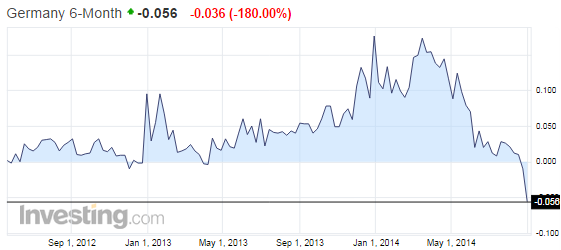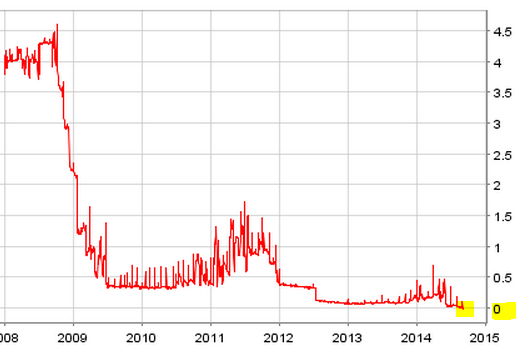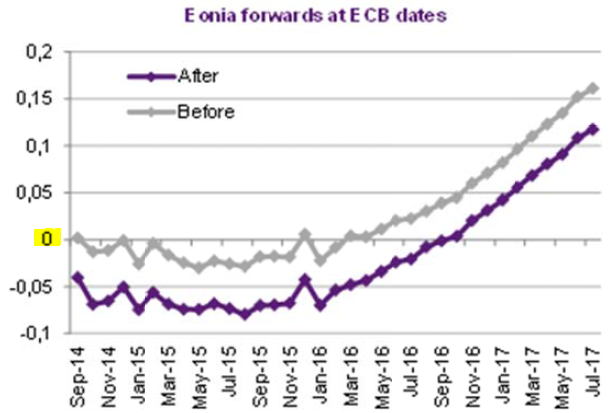Last week's unexpected decision by the ECB to set the rate on bank excess reserves to -0.2% is sending liquidity holders scrambling. The idea behind negative rates is to penalize cash position holders. The amount of reserves in the Eurosystem is constant at any one time, so the penalty-carrying reserves just bounce around from bank to bank like a "hot potato". The ones stuck with liquidity overnight will pay the 20bp penalty. The ECB hopes this will force the banking sector into more lending, with some lenders preferring extra credit risk over the pain of holding reserves.
Of course a great deal of this is wishful thinking, as undercapitalization and deleveraging (combined with tepid demand) will continue to plague credit creation. Quite soon the Eurozone banks will be forced to raise massive amounts of equity capital in order to improve leverage ratios (see story) and additional lending would require even more capital raising. The timing is not great.
So what are banks doing with their cash? The easiest option is to buy sovereign debt, particularly short term notes. Government paper has minimal to no impact on regulatory capital needs and does not cost banks the 20bp charged by the ECB. That's why banks (and others) are willing to (in effect) pay the German government to hold some of their excess liquidity. Below is the chart of German 6-Month bill yield.
Banks are also trying to lend to each other as liquidity sloshes through the system. Taking bank credit risk does raise capital requirements, but if limited to the higher rated banks, the marginal capital needs for those loans are relatively small. Of course the better rated banks are taking advantage of this situation by funding themselves in the interbank market at zero to negative rates. The chart below is the EONIA (overnight) interbank rate (equivalent to the Fed Funds rate in the US).
Moreover, the forward markets are now pricing EONIA rates to stay firmly planted in the negative territory through at least the mid-2016. The chart below shows the forward curve before and after the ECB action.
As the ECB expands its balance sheet via the TLTRO program, excess reserves in the banking system will grow. This liquidity will become increasingly expensive due to sheer size of cash balances that are costing banks 20bp. That's why the market expects even lower EONIA rates going forward, as banks pay more to avoid getting stuck with large overnight reserve balances.
Just as Japan is getting caught in what is becoming a perpetual quantitative easing program (see discussion), the Eurozone is looking at negative rates for some time to come. The unprecedented monetary experiments by global central banks will be with us far longer than originally expected.



